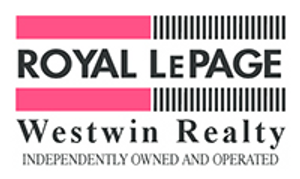Buying a house can be stressful. For first-time homebuyers especially, there is a lot of uncertainty around applying for a mortgage. That is why preparing for and understanding the process can decrease some of the stress of applying for a mortgage.
Applying For a Mortgage is Very Common
There are many reasons why as a borrower, you would want to apply for a mortgage. The most obvious is that you cannot afford to buy the house in cash and need to make installment payments on it over the next 15 to 30 years. However, even with a mortgage, real estate is one of the largest ways to build wealth.
That's why even Real Estate Investors use mortgages. To execute the BRRRR Method of buying a house, improving the value through forced appreciation, and refinancing the original equity out, they keep their initial investment low by using a mortgage.
Even if you are not buying an investment property and could afford to buy the house in cash, there are still valid reasons to apply for a mortgage. For instance, you'll have more cash on hand for other investment opportunities by having a mortgage.
Applying for a Mortgage: Choosing a Fixed or Adjustable Rate
With an adjustable-rate mortgage, your rate starts lower than a fixed rate. It then adjusts based on a predetermined index. Most adjustable-rate mortgages have a few terms:
-
Introductory rate
-
Period of the introductory rate
-
The maximum rate increase per adjustment
-
Maximum total rate increase
-
Amortization period
-
Period per-adjustment after the introductory period
These terms are often abbreviated by saying it is a 5/1 or 3/3 arm. They mean a 5 year and 3-year introductory period and a 1 year or 3 year adjustment period. So for 5 and 3 years, the loans would be a fixed rate, then every 1 and 3 years, they will adjust to the index over the life of the loan.
When Applying for a Mortgage, Which is better?
Like most things in life, it depends.
No, adjustable-rate mortgages are not the worst product ever introduced and created only for suckers. Even though that is what many pundits want you to believe. That does not mean they are a better deal or better for everyone. However, there are a few specific situations when adjustable loans are a good choice.
Sometimes, especially with a 5/3 ARM, you would make the same payment as you would have on the fixed loan for the entire introductory period. Then applied the excess towards the principal, you would end up paying such a large portion of the loan off by the time the monthly payment became much different than the fixed loan that it becomes a moot point. But, of course, that is considering maximum adjustments for each adjustment period.
Adjustable loans have their downsides too. One major downside is that you will still have to make higher payments if the rate adjusts, even if you pay down the loan.
Applying for a Mortgage: Conventional Vs. Portfolio Lenders
You might have heard the terms conventional mortgage or conforming mortgage. These terms refer to mortgages that lenders can issue, then package up and sell to another company.
For those lenders to sell them to a secondary market for the best rate, they must conform to Freddie Mac or Fannie May standards, such as your loan percentage of the overall home value. These types of loans are notorious for needing more documentation or re-sending updated files as the mortgage goes through underwriting. But, again, this is because the bank has to make sure they have everything to meet the standards.
If you do meet all the standards for getting a conforming loan, then great. However, if you do not, this is where portfolio lenders come in. Portfolio lenders are institutions, typically banks or credit unions, that offer loans they intend to hold on their own balance sheet or portfolio. Since they are not selling them off, these institutions make their own rules and loan requirements.
Because the institutions are not forced to check off all the underwriting standards of a conforming loan, their requirements are different. That is not to say they are necessarily taking wild risks. However, they can look at the loan's risk profile and determine if they still want to take on that risk.
It is less likely that you will find low 30 year fixed rates from a portfolio lender. They often are shorter-term or adjustable mortgages. The rates are usually a bit higher, though the closing costs can often be lower.
Applying for a Mortgage: 6 Steps
Because the prospect of getting a mortgage can be daunting, it helps to break down the process of applying for a mortgage into steps. It is really a process, and each step has a few things that need to be done by you, the borrower.
-
Pre-approval
-
Getting property under contract
-
Application
-
Underwriting
-
Commitment
-
Closing
Pre-Approval
The pre-approval stage of getting a mortgage is typically relatively pain-free. First, a loan officer will ask you some questions and get basic verification of your income and credit score.
During the pre-approval, the loan officer will tell you the total loan amount you will qualify for.
During the pre-approval, it is a good time to ask questions about what is required by the bank to close on the loan. Getting a clear understanding at this point can help alleviate surprises or disappointments later on in the process.
Getting a Property Under Contract
Getting a property under contract is a prerequisite to moving forward with the lending process because the bank will need to consider the property you are buying. So after you've found a home, made an offer that both parties have agreed to, you can move to the next step in applying for a mortgage.
Application
I Canada it is best to work with an independent mortgage broker rather than with a bank. Mortgage brokers work quickly and have your best interests in mind and will shop around to find you the best rate.
In the US, most lenders will use what is called a 1003 Uniform Residential Loan Application. If you do not see this application and are going through a conforming loan process, there is a good chance that you are going through a bank's questionnaire and filling out details so that their software can fill out the form for you.
Filling out this form will probably take about 1-3 hours, depending on how organized you are and if you have all the information needed in front of you. For example, if it is your first property and you do not have many loans, bank accounts, or brokerage accounts to mention in the application, it should not take too long.
Besides the 1003 Uniform Residential Loan Application, most banks will ask for 2 years of tax returns, 6 months pay stubs, and 3 months of bank statements.
Once you apply, the loan officer will send it to the underwriter and order the home appraisal.
Underwriting
Most people do not like going through the underwriting phase. This phase is where the loan officer takes your completed application package with all the documentation and delivers it to an underwriter for review.
The underwriting process is where the lender seeks to understand you and the property as a borrower and get comfortable giving you a loan.
The problem with this phase is banks can be notorious for asking for more documents than they originally asked for.
Sometimes they want to see the inspection report and want repairs made before closing that they think could put their money at risk if not handled. If that happens and the seller does not want to do anything about the defect, it can put you in a complicated position. This is especially tough when the seller already disclosed the defect, and you intended to repair it at a later time, perhaps when you saved up enough money.
Since it is tough enough to estimate renovation costs in the best of times, you do not want to be forced to deal with it in the underwriting stage of the home buying process. However, if you know the house needs some renovations and repairs to be livable or assure its long-term value, it is usually best to apply for a loan that includes a renovation or construction portion inside the loan.
Loan Commitment
Once the loan is underwritten and the lender has gone through their checklist of requirements for the loan to their satisfaction, they issue a loan commitment.
Some lenders wait for the appraisal to be completed before starting the underwriting process. Some of them do all the underwriting except the portion affected by the appraisal ahead of time and then wait for it to come in before giving the clear to close.
Once the loan commitment is issued, sometimes borrowers relax and maybe buy a car, get another loan, or open a credit card. Warning: do not do anything to affect your credit between the loan commitment and loan closing. The lender has the right to pull your credit on the closing day to make sure everything still looks good. For example, if they pull it and you have purchased a car, they could pull their commitment, and you will not be able to close on the house.
The best-case scenario if they do this is that you still qualify for the loan. It will likely delay closing because the bank will have to put the loan back through underwriting with the new debt information.
Closing
Getting to the closing table can be an exciting and nerve-racking time for a buyer. But, buying a house is a big deal, so that is understandable. Celebrate. You've successfully applied for a mortgage and are about to complete the process.
At closing, there will be a giant stack of documents to sign. The most notable documents will be the note and the mortgage. The note is what says you agree to pay the bank back. The mortgage is the document that secures their interest in the note to the property. If you do not pay the note, the lender will exercise their rights in the mortgage and start the foreclosure process.
Besides the note and mortgage, you will likely have to sign a whole bunch of disclosures. You will likely have to sign a document stating that you intend to be the owner-occupant of the property. You will have to sign a disclosure about the survey, bank privacy policies, title company privacy policies, indemnity agreements, and more.
This process can take an hour or two, so make sure you are not in a rush to get out the door to some other appointment.
Conclusion
The process of getting a mortgage can be time-consuming and feel cumbersome. But, in the end, there can be many benefits to the borrower. First, having a clear understanding of the process and the bank's requirements has the best chance of running smoothly.
This post originally appeared on Your Money Geek.
Author Tyler Weaver is a real estate investor and blogger at Relentless Finance (https://www.relentlessfinances.com/). He has flipped over 50 homes and manages a real estate portfolio in the midwest. He strives to help others build wealth and add value to other’s lives through a constant pursuit of growth.


